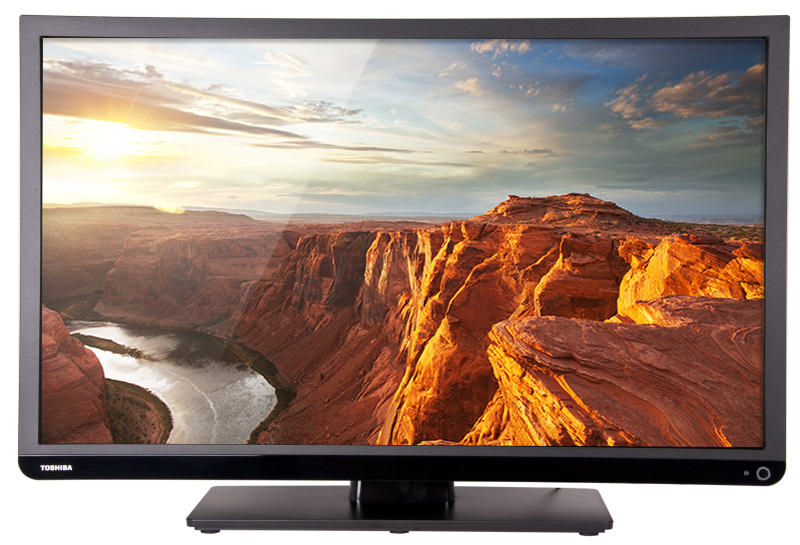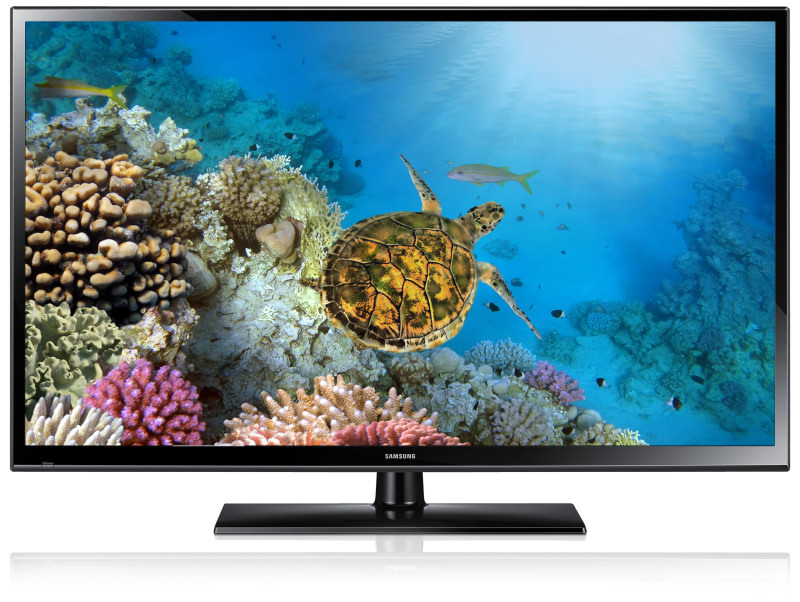This blog was updated in June 2022.
Buying a new television can be a frustrating experience. All you really want to do is settle down and boot up your streaming service of choice with the click of a button, but you’re confronted with all these different types of TV.
There are a baffling array of acronyms, formats, and tech jargon when it comes to discussing types of TV screens. All of these things are designed to promote and explain the features of modern televisions, but if you don’t know what to look out for, researching for your new set can be a bit of a minefield.
So, to help you navigate buying a new TV and take the stress out of it all, we’re going to walk you through the various types of TV available, how they differ, and which might be the best TV display for you so you can crack on with watching your favourite show or movie!
What is the most basic type of TV available?
Let’s start with the basics when it comes to types of TV screens. Back in the early days of television, the CRT (Cathode Ray Tube) screen was the most common type on the market.
These are your classic style ‘chunky’ television sets your parents probably owned, and probably what most of us visualise when we think of TV sets. The reason these TVs were so bulky is because the box had to house a screen and a projector ‘gun’.
The image on these TV displays was created by firing electrons through the gun onto a screen, exciting the particles on it. These TV formats have been on the decline since the early 2000s thanks to the introduction of far smaller LCD screens. These days, you would be extremely hard pushed to find any retailer selling them.
[Image]
What are LCD TVs?

Perhaps one of the most common types of TV screens currently available, LCD TVs are thin displays normally used in laptops, computer monitors, and now, TV screens.
What does LCD stand for?
The term ‘LCD’ Stands for ‘Liquid Crystal Display’. A liquid crystal display is a special flat panel which can block light or allow it to pass using liquid organic material.
The LCD panel is made up of segments, with each block filled with liquid crystals. The colour and transparency of these blocks can be changed by increasing or reducing the electrical current.
LCD crystals do not produce their own light, so an external light source like a fluorescent bulb is needed to create an image, but they provide excellent image quality.
LCDs offer great energy efficiency, are particularly long-lasting, and also don’t suffer screen burn-in, which was a huge problem with CRTs. They’re also fairly cheap when compared to newer types of TV.
What is an LED TV?

Another common form of TV in the modern-day, contrary to popular belief, LED TVs are not a completely new format of television. Instead, they’re simply an updated version of the previous LCD generation.
LED TVs use the same technology as an LCD TV, but instead of being illuminated by a fluorescent bulb from behind, they’re lit by an array of LEDs.
What does LED stand for?
LED stands for light-emitting diodes. These are far more efficient and smaller in size, meaning the TV can be even narrower than previous designs. LED can be broken up into two further major categories: direct or back-lit LED and Edge-lit LED.
Direct LED
Direct LED displays are backlit by an array of LEDs directly behind the screen. This enables focused lighting areas, meaning specific cells of brightness and darkness can be displayed more effectively for better picture quality.
Edge-lit LED
As the name suggests, edge-lit LED TVs have lights set around the television frame. Edge-lit models reflect light into the centre of the monitor, and are the thinnest, lightest models available, since they have fewer lights in the centre of the screen.
LED is the most popular format of TV on the market right now due to its reasonable cost, varied size, and general versatility, although it’s not the highest quality image available.
[Image]
What is a plasma TV?

In many regards, plasma TVs are arguably superior to LCD and LED screens in terms of contrast and colour accuracy. However, plasma TVs suffer from a restricted format that can only accommodate larger screen sizes, usually a 40”+ TV, due to costs.
But thanks to these larger screen sizes, buying a plasma TV can sometimes work out cheaper in the long run. It’s also common to see plasma TVs used in the super-sized 80-inch+ screens, as the plasma screens are easier and more cost-effective to produce at those larger sizes.
What is an OLED TV?

OLED is a massive leap forward in terms of screen technology and provides some of the crispest screen images out there. Naturally, this also makes them some of the most expensive types of TV.
What does OLED stand for?
Unlike the name might suggest, OLED is not just a slight variation on LED. OLED stands for Organic Light Emitting Diode and uses ‘organic’ materials, like carbon, to create light when supplied directly by an electric current.
When it comes to OLED vs LED or OLED vs LCD, an OLED TV doesn’t require a backlight to illuminate the set area. Without this restriction of an external light source, OLED TVs can be super thin and crucially, far more flexible in their use.
As the individual areas can be lit up directly and not via an external backlight, the colours and contrasts are much better on OLED TVs. On the whole, OLED is thinner, more flexible, faster at processing images, and creates deeper colours.
We may begin to see the technology more on phones, smartwatches and wearable tech, where the screens are a smaller size and are therefore more cost-efficient.
What’s the difference between OLED and QLED
If you’ve heard of OLED, then you might also have heard the term QLED as well. QLED stands for Quantum Dot LED. It’s a variation of LED and LCD which adds a quantum dot film to the screen.
This allows the pixels within the screen to emit their own light when external light hits the quantum dots, letting these screens use LCD technology without using a backlight. Essentially, they’re another up and coming TV type on par with OLED technology.
What size TVs can you get?
It should come as no surprise that there are a plethora of TV sizes available for you to choose from. The smallest TVs tend to sit at around 19-inches, with the biggest being 40+ inch plasmas for home use.
What size of TV you buy will obviously depend on your needs and the space of your home, so be sure you’ve measured where you want to place your TV before you make your purchasing decision.
TVs at Ebuyer
Of course, there’s far more to buying a TV than considering screen type and size. Maybe you want a 4K screen or smart TV features. Either way, we’ve plenty of TVs for you to choose from in the Ebuyer store.
Start browsing today to find your ideal model and don’t forget to check out the Ebuyer blog for more articles like this one.


























